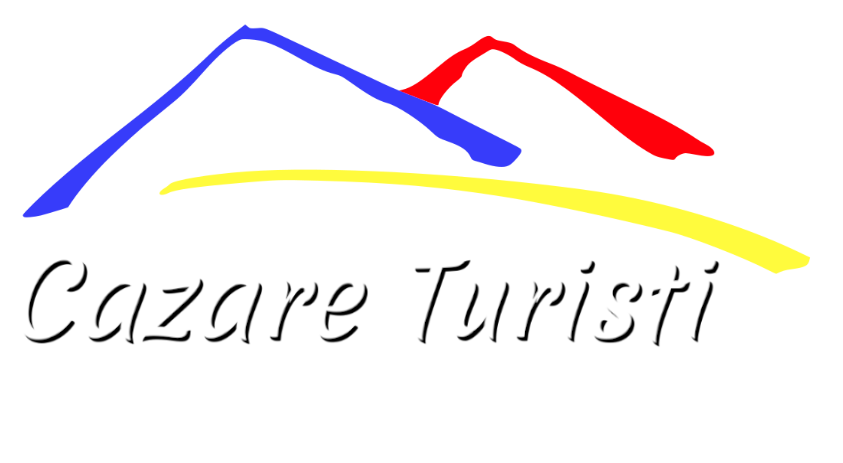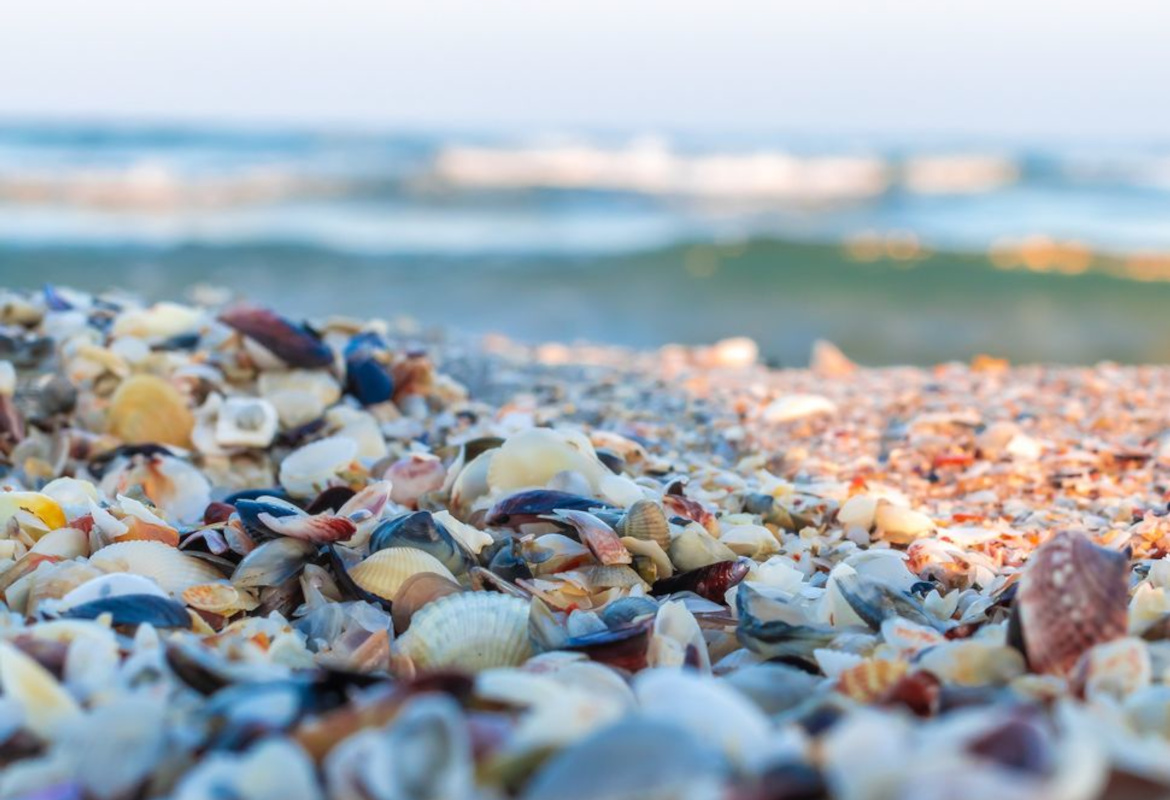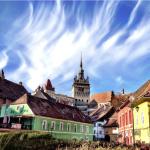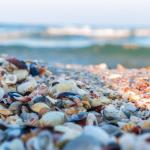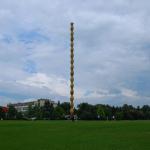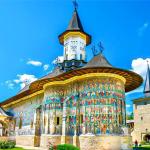The Romanian Seaside – The Black Sea's Hidden Gem
The Romanian Black Sea coast stretches for approximately 245 kilometers, from the northern border with Ukraine (near Chilia Veche) to Vama Veche, close to the border with Bulgaria. This region is primarily located within Constanța County, except for a small northern section in Tulcea County, where the Danube Delta meets the sea. With fine sandy beaches, gentle breezes, and warm waters, this stretch of coastline is a major attraction during the summer season.
Geographically, the Romanian seaside is strategically located in the southeast of the country, easily accessible from major Romanian cities as well as neighboring countries. The most important gateway is the city of Constanța – Romania’s second-largest city and a key port and tourist hub. It is also home to Mihail Kogălniceanu International Airport, which facilitates international arrivals.
Infrastructure Status: Between Modernization and Challenges
The national roads leading to the seaside are in relatively good condition, although heavy summer traffic can test the patience of drivers. The A2 highway, known as the “Sun Motorway,” is the most commonly used route to the coast. It connects Bucharest to Constanța and offers a fast and comfortable journey, especially after recent repair and modernization works. However, weekend traffic jams and congestion at city exits remain recurring issues.
Besides the A2, DN39 connects the southern resorts such as Eforie, Costinești, Neptun, Olimp, and Mangalia, all the way to Vama Veche. DN22, from Tulcea to Constanța, serves travelers from northern Romania and Moldova. Despite governmental efforts, full modernization of the area's road infrastructure remains a mid-term goal.
Accommodation Options: Variety Meets Challenges
Accommodation along the Romanian seaside has greatly diversified in recent years to cater to a wide range of tourists. From 4- and 5-star hotels with all-inclusive services, pools, and spas, to family-run guesthouses, hostels, and short-term rental apartments, the offer is broad. Resorts like Mamaia, Eforie Nord, Neptun, and Jupiter feature modern, recently renovated facilities, although outdated buildings with below-standard services still exist.
Prices vary significantly depending on the resort, comfort level, and season. During peak season (July-August), rates for a 4-5 star hotel in Mamaia can reach RON 800–1,200 per night ($175–$265), while in more affordable resorts like Eforie Sud or Saturn, decent accommodations can be found for RON 250–400 per night (
A recurring criticism has been the value-for-money ratio. While services have improved in many locations, some establishments charge unjustifiably high rates for the quality offered. Nevertheless, many hotels now meet European standards, and investments in the tourism sector continue to grow.
Things to Do Beyond the Beach
The Romanian seaside offers more than just sun and sea. For tourists seeking active or cultural leisure, the area presents a variety of options.
In Mamaia, visitors can enjoy water sports – from jet skiing and kite surfing to paddleboarding, parasailing, and inflatable rides. The cable car offers a stunning view over the beach and the sea. Families can have fun at Aqua Magic water park or Luna Park.
In Constanța, the cultural capital of the coast, tourists can explore:
The Constanța Casino, an architectural symbol currently under restoration;
The National Museum of History and Archaeology, showcasing Greco-Roman artifacts;
The Carol I Mosque, with panoramic views from its minaret;
The Constanța Aquarium, perfect for families;
The Dolphinarium and Planetarium, part of the Natural Sciences Complex.
Further south, in Mangalia, visitors can tour Mangalia Stud Farm – one of Europe’s oldest and largest, known for its Arabian thoroughbreds. The ruins of the ancient city of Callatis add cultural value to the area.
Top Tourist Destinations on the Romanian Seaside
The Romanian coastline is divided into several resorts, each with its own character, catering to different tourist profiles – from families and seniors to young people seeking nightlife. Here’s a quick tour of the most well-known tourist spots:
Mamaia – The Queen of the Coast
Located north of Constanța, between Lake Siutghiol and the Black Sea, Mamaia is the most famous and vibrant resort. Luxurious hotels, high-end beach clubs, fine sand beaches, and modern infrastructure attract thousands of visitors every year.
Mamaia is ideal for those seeking comfort by day and entertainment by night, with clubs like Fratelli, Ego, and Nuba leading the party scene. However, prices here are among the highest on the coast, on par with some Western European resorts.
Eforie Nord and Eforie Sud – Relaxation and Spa Treatments
These two resorts are ideal for families and tourists looking for peaceful stays and health treatments. Eforie Nord is known for its balneotherapy center using therapeutic mud from Lake Techirghiol. Eforie Sud offers a more relaxed atmosphere and budget-friendly prices.
Costinești – Youth Capital
Popular since the 1980s as a student resort, Costinești still attracts a young, energetic crowd with lively terraces, affordable guesthouses, and beach parties. The iconic shipwreck of the Greek vessel Evangelia is a landmark and a popular photo spot.
Neptun, Olimp, Jupiter – Family-Friendly Escapes
These southern resorts blend beach fun with a more natural and peaceful ambiance. Many hotels have been recently renovated, offering spa services and quality restaurants. The pine forests nearby add a refreshing element to the environment.
Mangalia and Vama Veche – Tradition Meets Nonconformism
Mangalia is both a city and a resort, offering balneotherapy, cultural landmarks, and diverse accommodation options, ideal for families and older tourists.
Vama Veche, on the other hand, is a unique cultural phenomenon. Situated right on the Bulgarian border, it attracts a bohemian, alternative crowd looking for live music, freedom, and countercultural experiences. Despite increasing commercialization, it retains its rebellious charm.
Recent Tourism Trends on the Romanian Seaside
In recent years, the Romanian seaside has started redefining its tourism identity. The emergence of the "affordable luxury" concept, with all-inclusive services in 3- and 4-star hotels, has helped attract new tourist categories. Family-friendly tourism, with facilities for children (theme pools, playgrounds, shows), has also gained momentum.
A rising trend is the popularity of vacation rentals, offering greater flexibility and privacy. Platforms like Airbnb and Booking.com have become essential for holiday planning.
Still, challenges remain: overcrowding during peak season, uneven service quality, underdeveloped infrastructure in some areas, and a shortage of skilled tourism staff are hurdles that must be overcome for the region to meet international standards.
Top Tourist Attractions and Must-Do Activities
Beyond the beaches and clubs, the Romanian coast has a rich cultural and natural heritage worth exploring. Highlights include:
Histria Fortress – the oldest documented urban settlement on Romanian territory;
The Danube Delta (near Sulina) – a perfect one- or two-day trip from the coast;
Genoese Lighthouse and Constanța Casino – historic landmarks of the city;
The Romanian Navy Museum, Tomis Port, and festivals such as Neversea, which enhance the area’s appeal.
Tourists can also enjoy boat cruises, seaside cycling tours, Dobrogean wine tastings, or traditional seafood dining experiences.
Helpful Tips for Tourists
Book early – top accommodations get reserved quickly, especially in July and August.
Avoid weekends if possible – traffic and prices are more manageable during the week.
Check online reviews before booking lesser-known places.
Explore beyond the beach – the Romanian seaside has many hidden gems.
Is the Romanian Seaside Worth It?
The answer is yes, with some considerations. The Romanian coast has enormous potential – beautiful natural scenery, rich history, diverse accommodation, and activities for all preferences. With proper planning and wise choices, tourists can enjoy memorable, relaxing, and culturally enriching vacations.
As the seaside tourism industry evolves, investments in infrastructure and service quality will be key to reestablishing the Romanian coast as a competitive and attractive destination not only for locals but also for international visitors.
